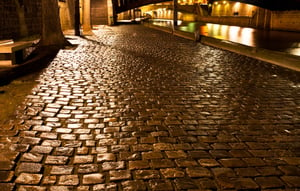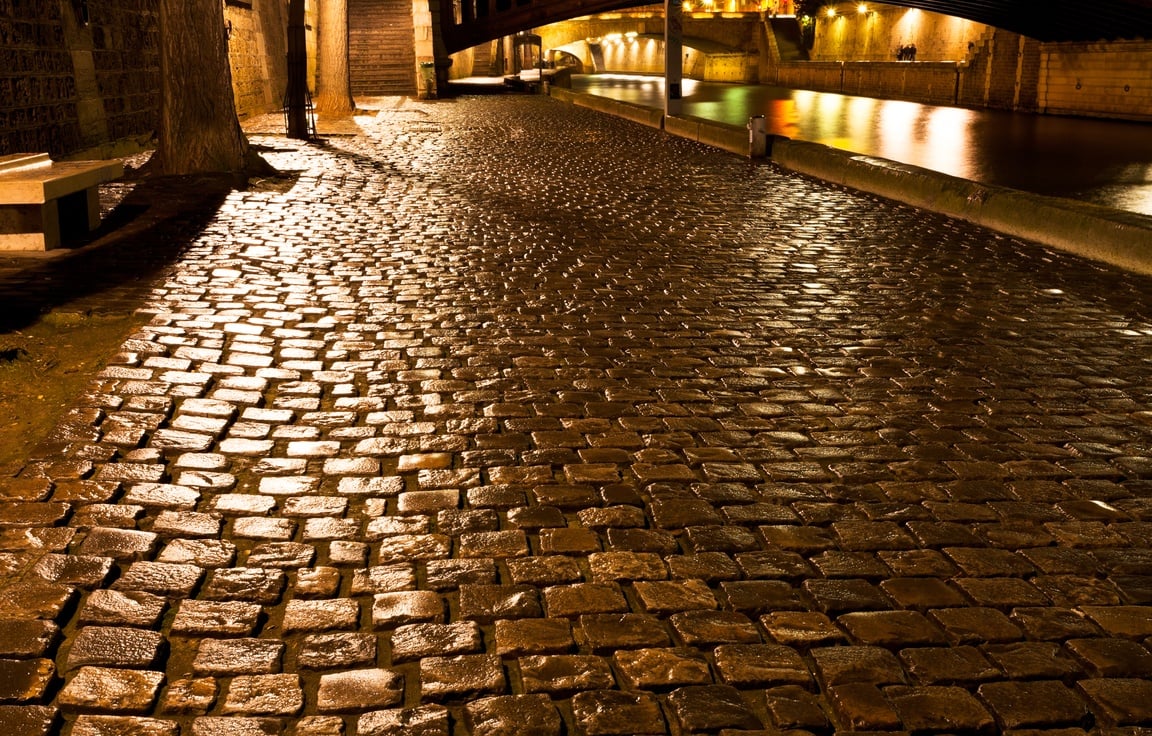The History of Cobblestones, and Their Use in Paving for Your Connecticut Home
 Cobblestones. They’re beautiful, and they instantly bring to mind winding lanes through misty villages. They’re also tricky to walk on, and the cause of many a twisted ankle.
Cobblestones. They’re beautiful, and they instantly bring to mind winding lanes through misty villages. They’re also tricky to walk on, and the cause of many a twisted ankle.
They're also a lot more than merely pretty. In fact, they’re considered one of the most durable and hardwearing paving methods in the world.
That is probably why they’ve been around nearly as long as there have been paved roads.
Constructing cobblestone roads hasn’t changed much in all that time. Water worn stones are collected and sized. Then they are either set on a sand bedding or in mortar. This creates an easy to clean; crack resistant road surface that’s perfect for areas where freezing and flooding is likely.
Historically, these features were a massive improvement over muddy, dirty tracks, and it’s not hard to see why this type of paving gained popularity.
Let’s take a closer look at three periods during which cobbles were at their peak importance: the 1300’s and earlier, the 1400’s to the late 18th century, and the golden era of the 19th century.
The 1300's and Earlier
The phrase “All roads lead to Rome” has been around a long time (and is now the title of a movie!), but it’s also based on historical fact.
As early as 238 B.C.E., the Romans used tons and tons of cobblestones to create 50,000 miles of roads linking every part of the Roman Empire together—and they all lead to Rome!
Not only was this extensive network of paved roads one of the keys to Roman domination of Europe, but they were so well built (using cobblestones, sand and lime) that large parts of the network still exist today!
1400's to Late 18th Century
During the earlier part of the medieval era, the approach to road building in Europe was much the same as health and hygiene. In other words, it wasn’t a big priority, and no one really understood why it was important. In fact, during this period, most roads that weren’t left over from the Roman era were nothing more than dirt and mud that had been packed down by the movement of horses and carts.
That meant that most towns and villages featured muddy tracks, rutted by cartwheels.
Only a few roads, like the major road between Westminster and Temple Bar in London were paved with cobblestones.
It may have been the difficulty in constructing paved roads, or a shortage of materials or skilled labor that prevented cobblestone road paving. Eventually, however, the benefits of cobblestone roads once again got the priority it deserved, and laws were passed making road maintenance (and cobblestone road construction) mandatory.
The Golden 19th Century
During the 19th century, cobblestone roads were the norm, and the use of cobblestones had even made it across the oceans to European colonies and former colonies—which is why you can still find cobbled streets in places like Cape Town (South Africa), Puducherry (India), and Boston.
In fact, you will find cobblestones all over the world, in the most unlikely places, as well as throughout much of the US and Canada!
Historic Cobblestones versus Modern Alternatives
Throughout their long use in Europe and other parts of the world, cobblestones evolved to suit horses’ hooves. That’s why most of the classic cobbled streets in the world feature stones that are about 4” in diameter. Those were the standard type of stone used, because they were the easiest on horses’ feet.
They’re not ideal for human feet though, as anyone who has tried to walk down a cobbled street can confirm.
That is why the modern alternative to cobblestones as they exist in Roman and other historic roads are actually flatter, square stones (usually granite or Belgian rock) which are easier to walk on and much more common these days.
Whether it is traditional or more modern, however, cobblestone paving certainly lends instant old world charm to any home exterior.







